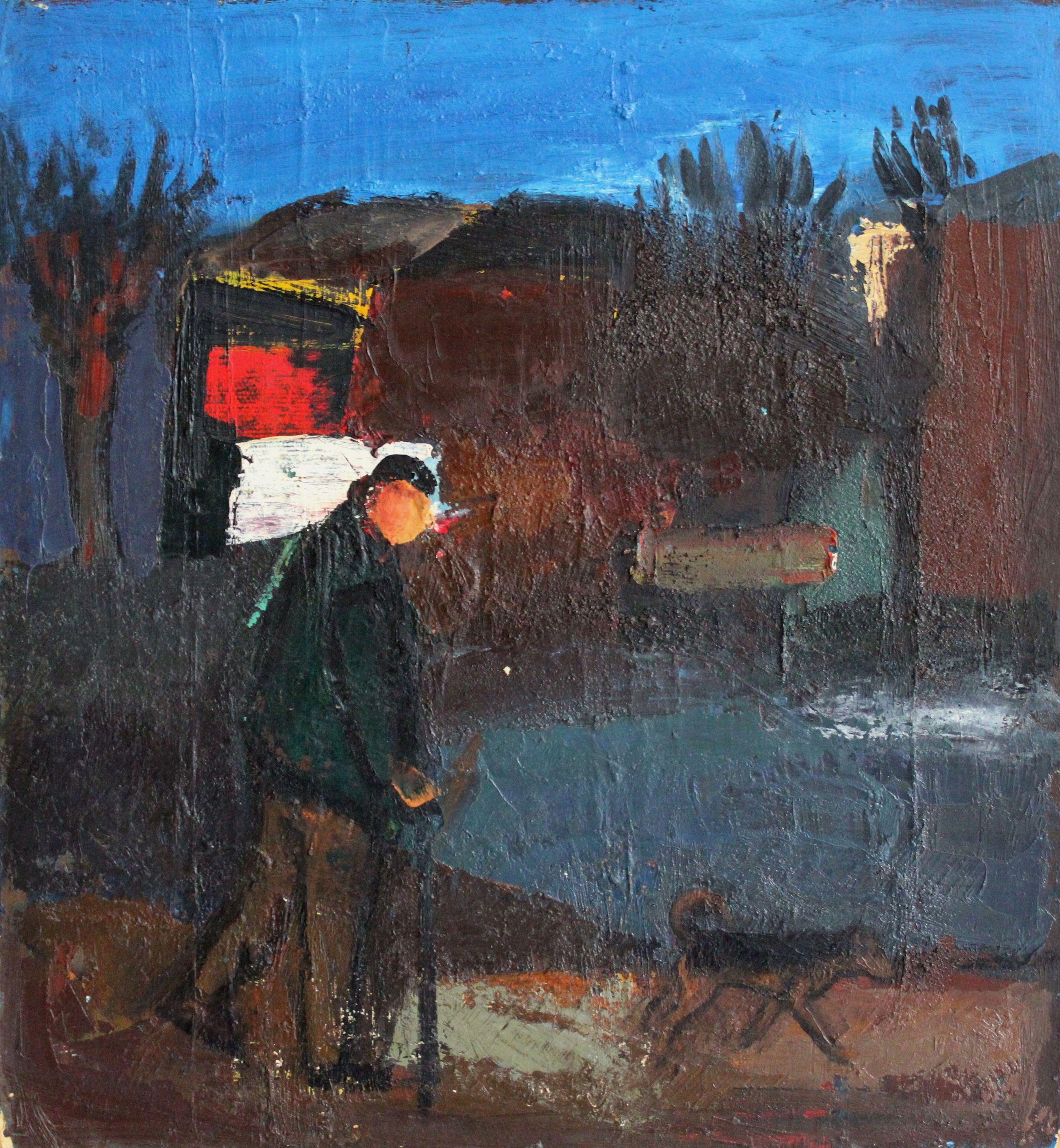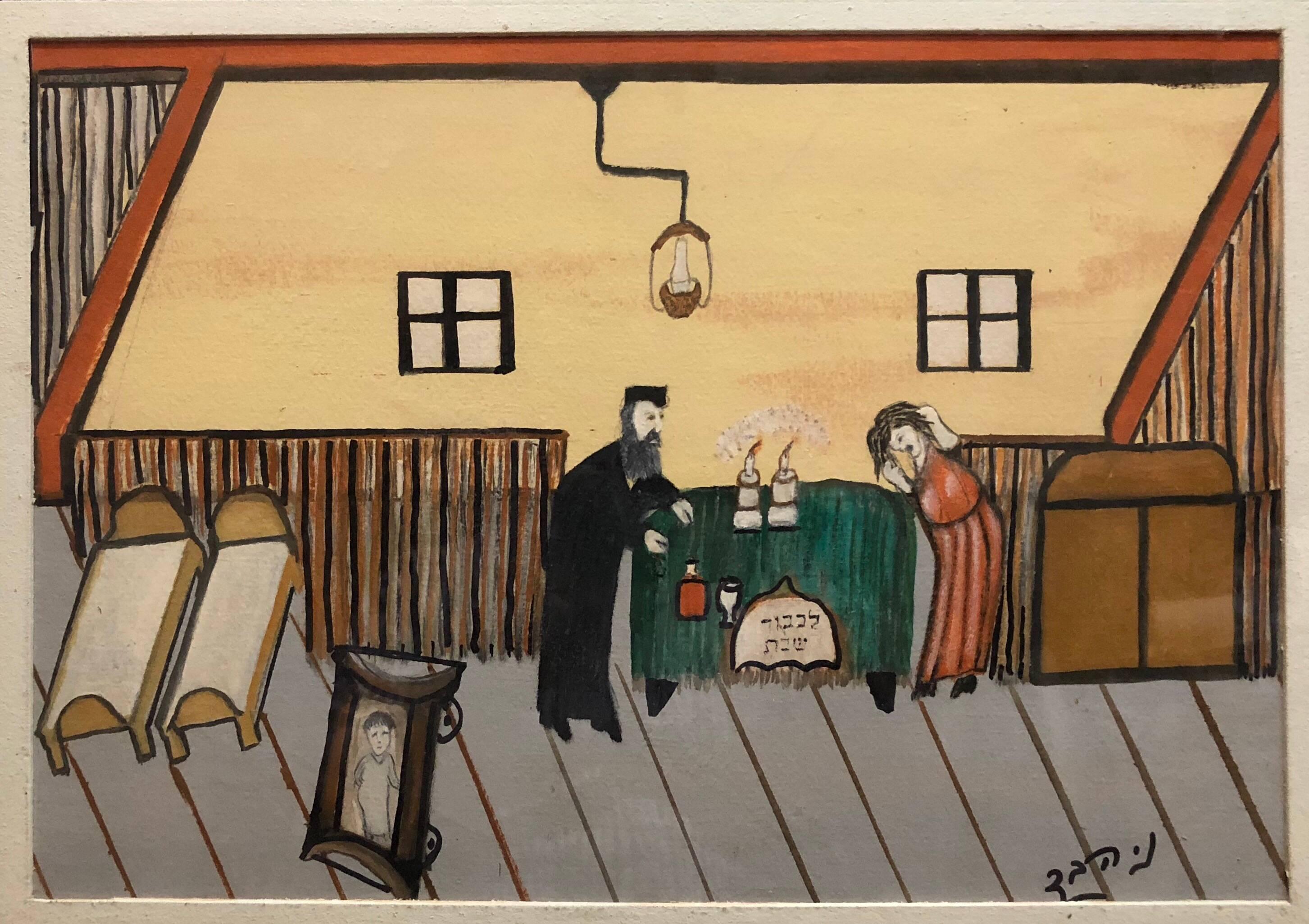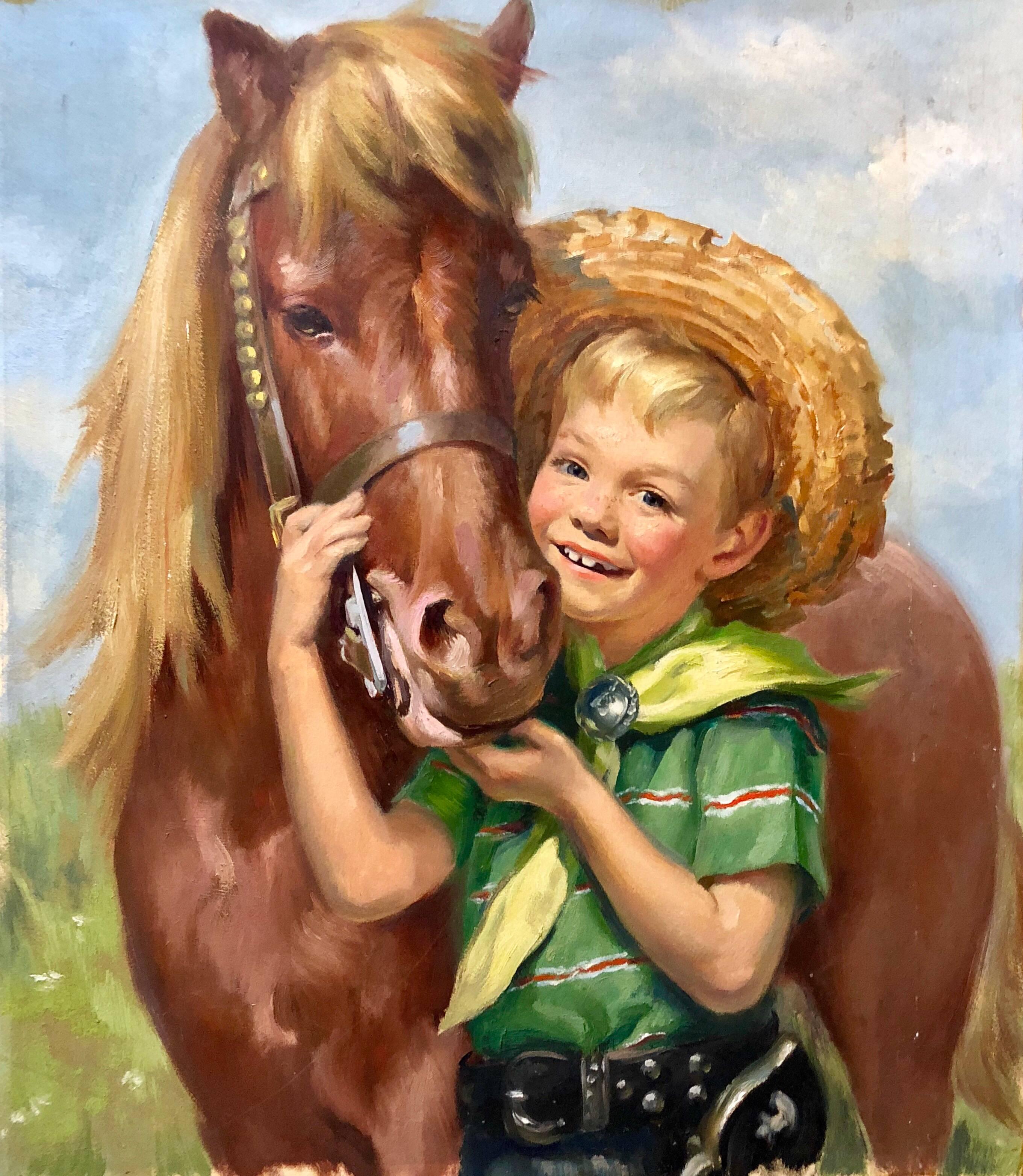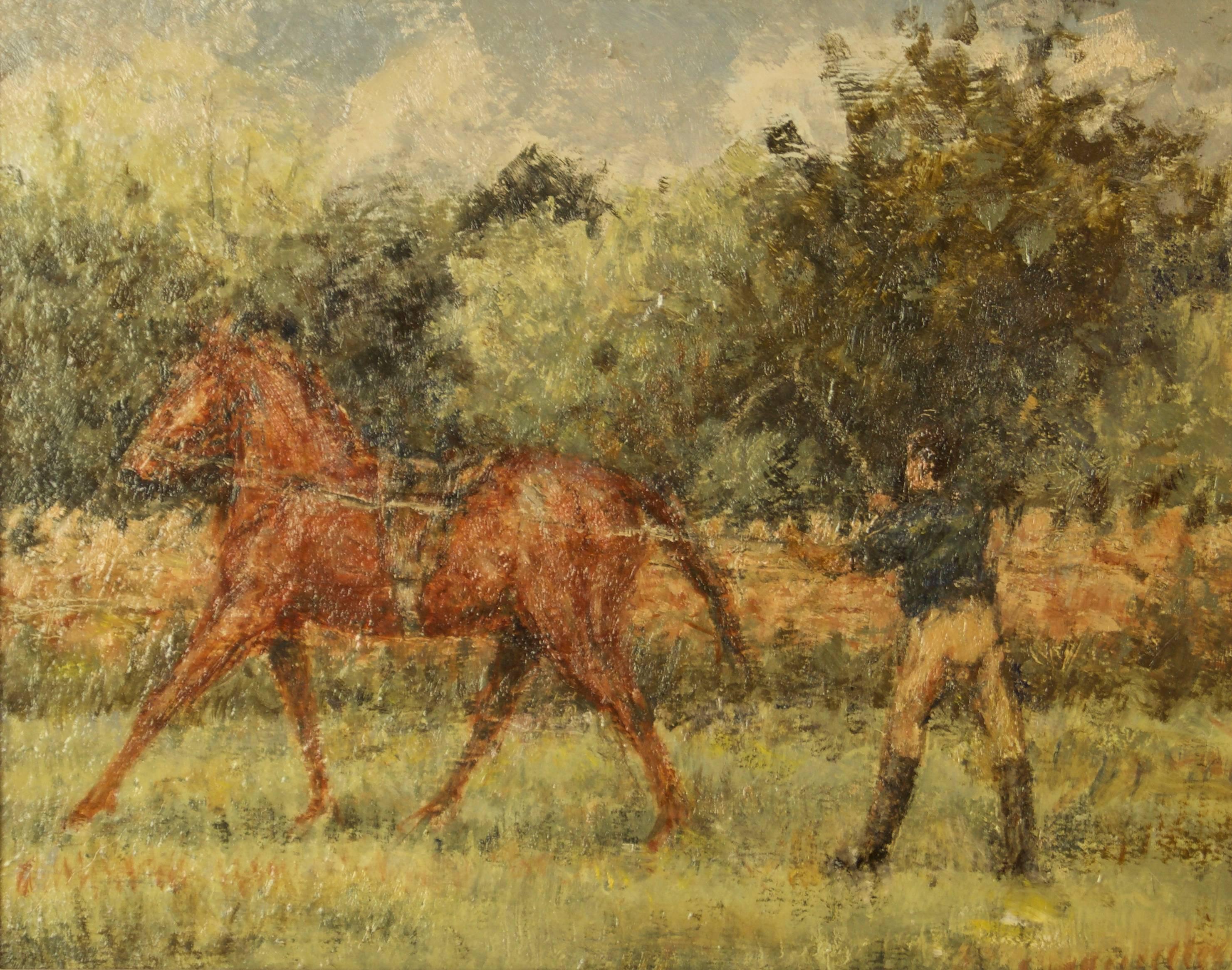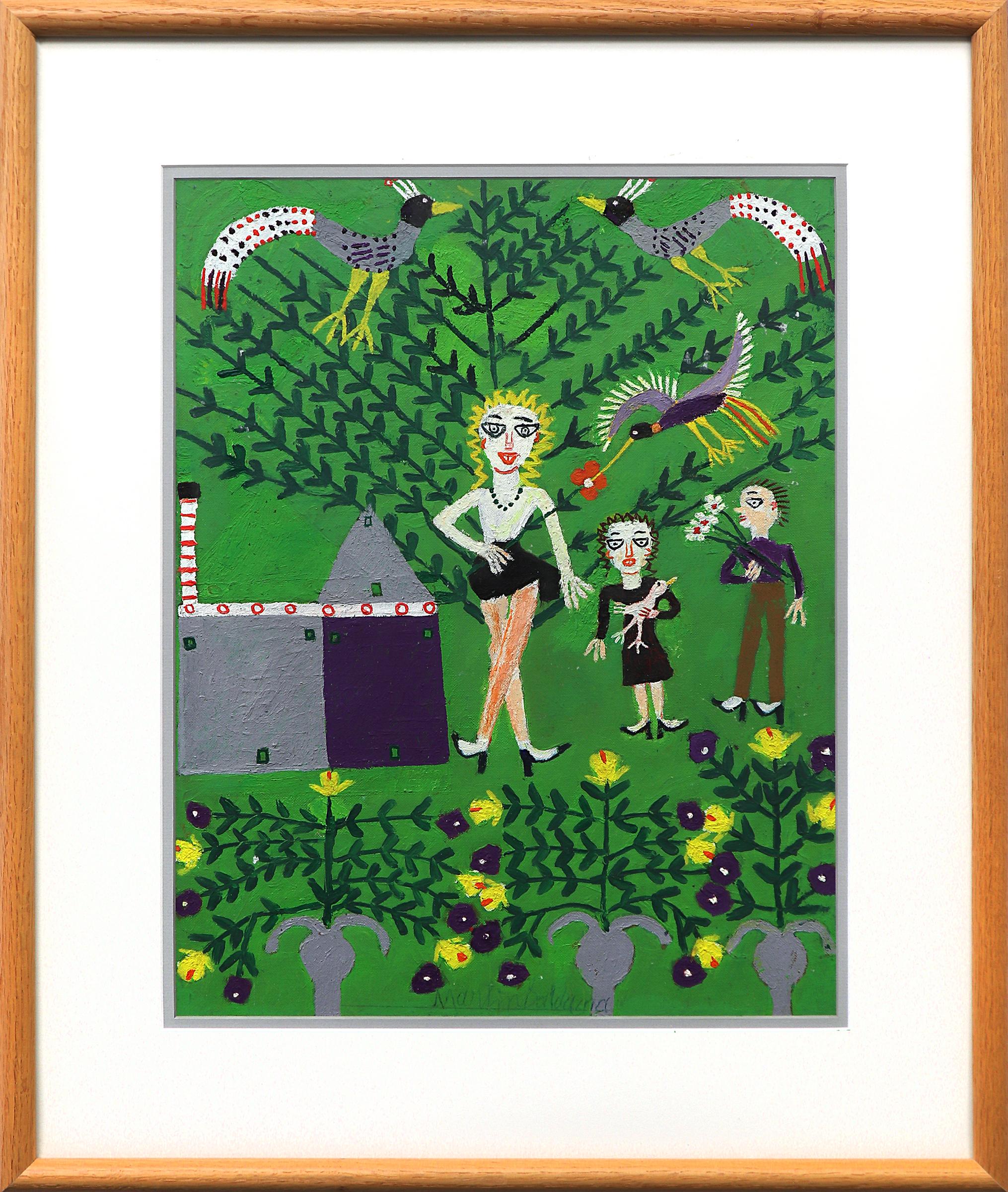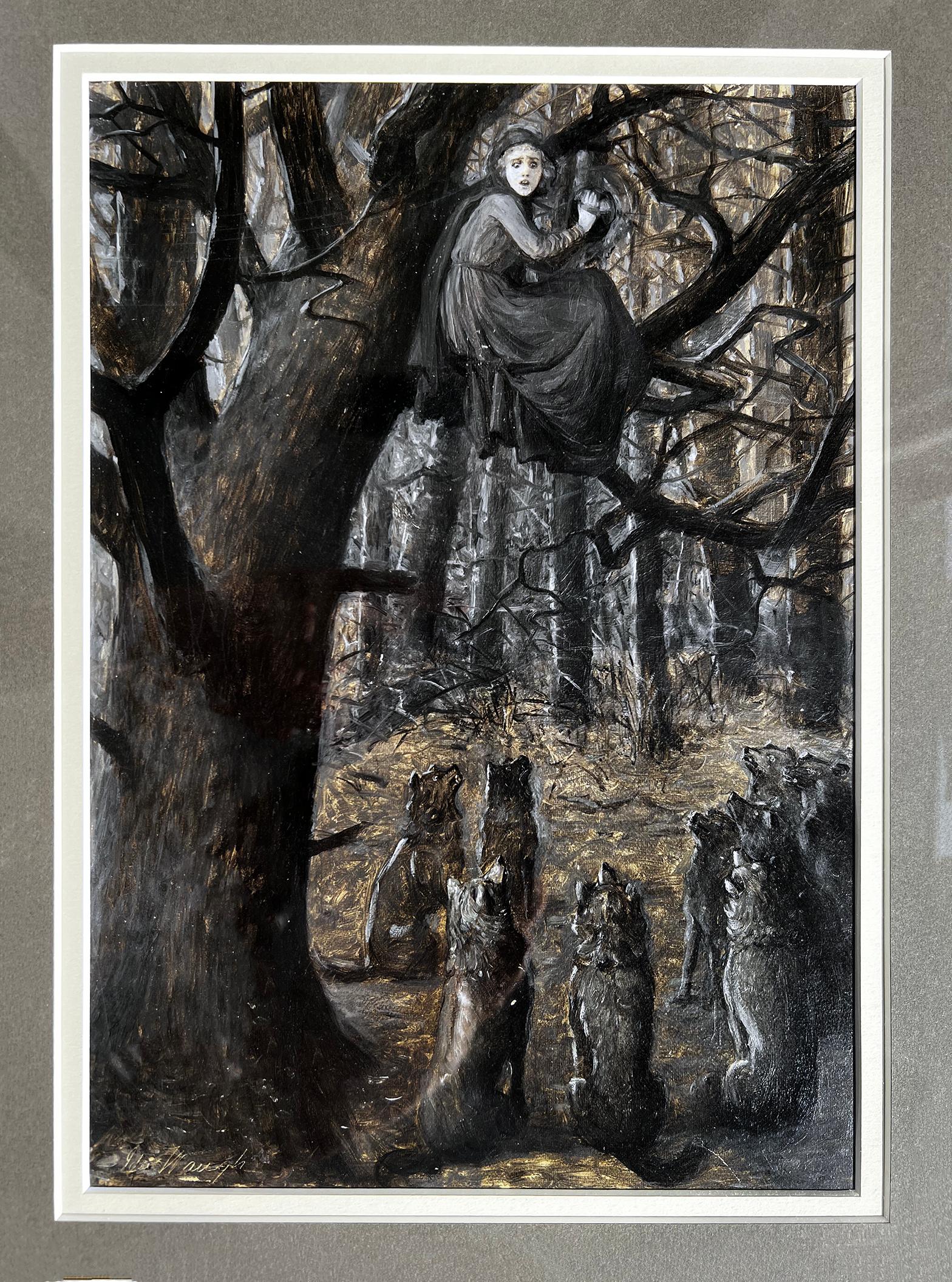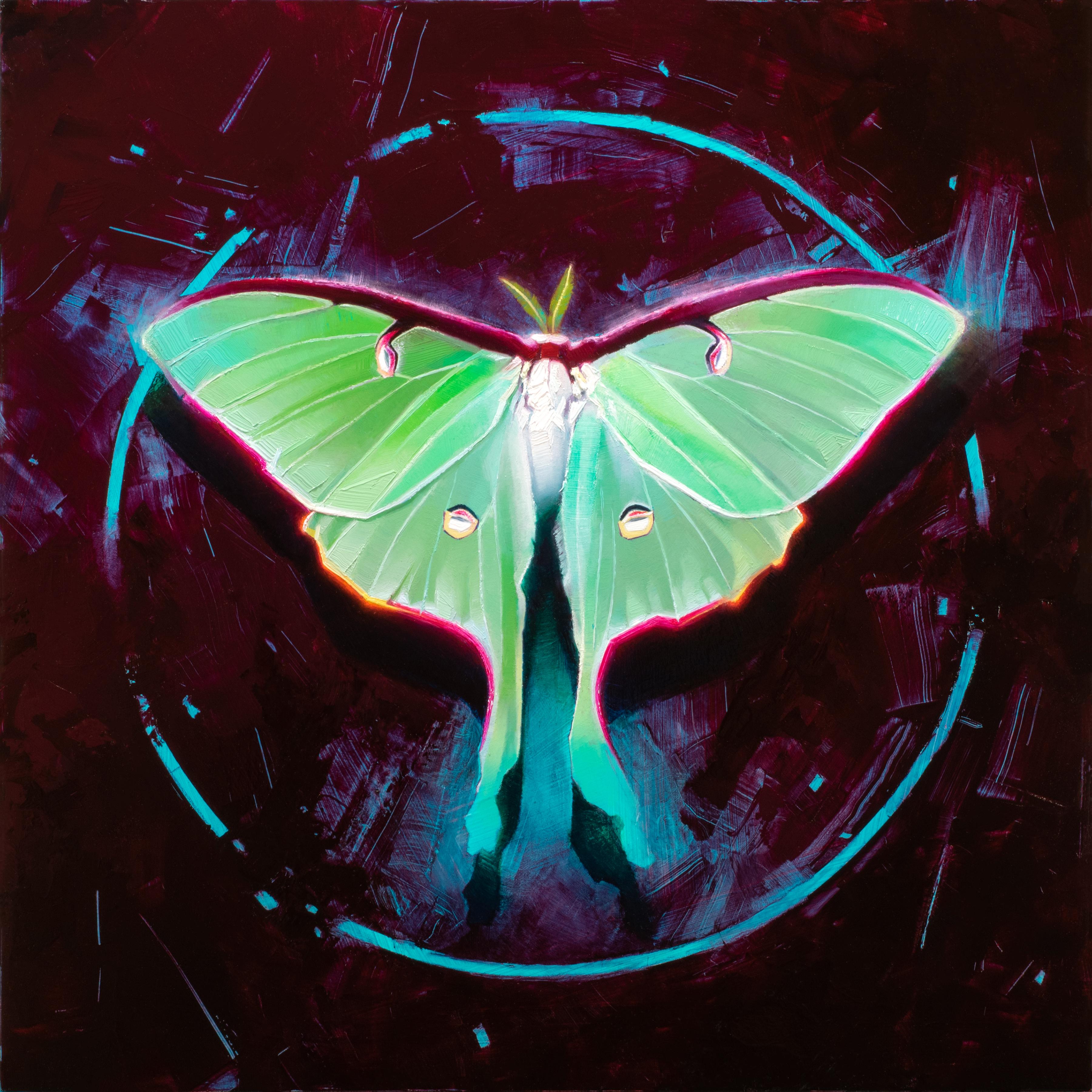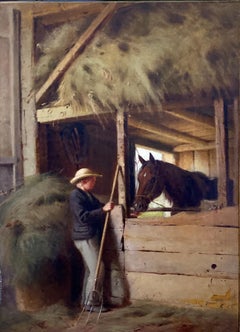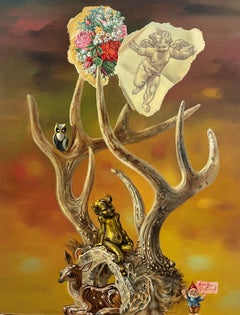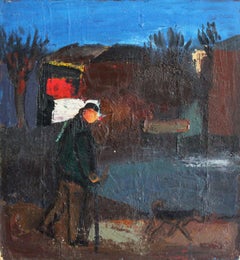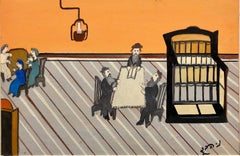"Algerian Horsemen in the Desert, " Frederick Billing, Orientalism, Arabian Horse
View Similar Items
Want more images or videos?
Request additional images or videos from the seller
1 of 9
Frederick Billing"Algerian Horsemen in the Desert, " Frederick Billing, Orientalism, Arabian Horse1902
1902
About the Item
- Creator:Frederick Billing (1834 - 1914, American)
- Creation Year:1902
- Dimensions:Height: 12 in (30.48 cm)Width: 15 in (38.1 cm)
- Medium:
- Movement & Style:
- Period:
- Condition:Excellent.
- Gallery Location:New York, NY
- Reference Number:1stDibs: LU184129923852
About the Seller
5.0
Platinum Seller
These expertly vetted sellers are 1stDibs' most experienced sellers and are rated highest by our customers.
Established in 2021
1stDibs seller since 2022
62 sales on 1stDibs
Typical response time: 1 hour
More From This SellerView All
- "Interior of a Stable" William Hart, Hudson River School Antique, Boy and HorseBy William HartLocated in New York, NYWilliam M. Hart (1823 - 1894) Interior of a Stable Oil on canvas 17 x 12 inches Provenance William Macbeth Gallery, New York Mrs. Mabel Brady Garvan Collection Christie's New York, Sporting Art, November 28, 1995, Lot 116 Ann Carter Stonesifer, Maryland Estate of above Brunk Auctions, Asheville, North Carolina, January 27 2018, Lot 777 Exhibited New York, The Metropolitan Museum of Art, Life in America, April 24 - October 29, 1939, no. 123, illustrated. New York, Macbeth Gallery, 1892: Sixtieth Anniversary Exhibition, April 1952, p. 5, no. 18. Literature Turner Reuter Jr, Animal and Sporting Artists in America, Middleburg, Virginia, 2008, p. 306. Gary Stiles, William Hart: Catalogue Raisonné and Artistic Biography, no. 1126, illustrated. It should be noted that the Francis Patrick Garvan and Mrs. Mabel Brady Garvan collection, of which this painting was a part of, was one of the foremost American Art collections and now makes up a large part of the Smithsonian American Art Museum and the Yale University Art Gallery collections. Born in 1823 in Paisley, Scotland, William Hart emigrated with his parents to the United States at the age of nine and settled in Albany, New York. It was here that Hart first began his artistic training when he was placed under the tutelage of Messrs, Eaton & Gilbert, the prestigious coach-makers from Troy, New York. During this time, Hart learned how to decorate coach panels, covering them with either landscapes or figurative compositions. At the age of seventeen, he was eagerly contemplating an artist’s profession. Consequently, he left the mechanical trade of coach-making and began expanding his artistic pursuits to more refined endeavors. Hart followed coach-making with decorating window shades and later developed an interest in portraiture. Around 1840, he established his first formal studio in his father’s woodshed in Troy. There, he created many likenesses of individuals, affording him a nominal income. Once, he remarked that he felt prouder over his first fee of five dollars for painting a head then for the larger sums he would command later in his career. Nevertheless, his wages from portraits during this early period proved insufficient. Thus, he expanded into landscape painting, allowing him to barter his works or sell them for modest prices. In 1842, Hart moved to Michigan in an attempt to further his success; portraiture remained his primary means of support. Unfortunately, his experiences in the West were disappointing. Hart spent three years living a rough existence until he finally returned to Albany in 1845. Upon his return, he fully devoted himself to the art of landscape painting. Despite his failing health, he worked diligently to perfect his skill until 1849 when he traveled abroad to his native land of Scotland. This trip was made possible through the generosity of his patron and advisor, Dr. Ormsby of Albany. For three years, he studied in the open-air, creating brilliant sketches of the Scottish Highlands and the surrounding British Isles. Returning to Albany once more in 1852, Hart enjoyed improved health and was reinvigorated with purpose. The following year, he moved to New York and opened a studio, promoting himself as a specialist in landscape painting. Hart became a regular contributor to the National Academy of Design. His works received a great deal of attention from artists and connoisseurs alike, all of whom praised him for his fresh, self-taught style. In 1855, he was designated as an associate of the National Academy of Design; three years later he was elected to Academician. In 1865, he was unanimously chosen to be the first president of the Brooklyn Academy of Design. It was during his tenure there that he delivered his famous lecture The Field and Easel, which emphasized the distinguishing principles of landscape art in America. Hart argued that landscape painters should express the “look of the place” being depicted.Critics during the 1870s noted his sensitive balance between capturing a strict “real” interpretation of nature and that of a more “ideal” sentimental tone. For instance, in 1869, Putnam Magazine noted that Hart brought back “exquisite studies” of the surrounding Tappan...Category
19th Century Hudson River School Animal Paintings
MaterialsCanvas, Oil
- "A Quiet Afternoon, " Enoch Wood Perry, Genre Scene Mother and Child at FireplaceBy Enoch Wood Perry Jr.Located in New York, NYEnoch Wood Perry, Jr. (1831 - 1915) A Quiet Afternoon, 1876 Oil on canvas 15 1/4 x 21 inches Signed and dated lower right Born in 1831 in Boston, Enoch Wood Perry, Jr, is internatio...Category
1870s Hudson River School Interior Paintings
MaterialsCanvas, Oil
- "Faun and Fawn" Aaron Bohrod, Realist Still Life, Deer and PuttiBy Aaron BohrodLocated in New York, NYAaron Bohrod Faun and Fawn, 1984 Signed lower right Oil on gesso board 16 x 12 inches Aaron Bohrod's work has not been limited to one style or medium. Initially recognized as a regionalist painter of American scenes, particularly of his native Chicago, Bohrod later devoted himself to detailed still-life paintings rendered in the trompe l'oeil style. He also worked for several years in ceramics and wrote a book on pottery. Born in 1907, Bohrod began his studies at Chicago's Crane Junior College in 1925, and two years later enrolled in the Art Institute of Chicago. But it was at the Art Students League in New York City, from 1930 to 1932, that he studied under the man believed to be his most significant early influence, John Sloan. Sloan's romantic realism is reflected in the many depictions of Chicago life, which comprised most of Bohrod's early work. Under Sloan's tutelage, Bohrod came to subscribe to the belief that painters should find the subjects of their art in the immediate world around them. These paintings emphasized architecture unique to north Chicago and featured Chicagoans engaged in such everyday activities as working, playing or going to the theatre. The romantic aspect was conveyed by the use of misty colors, and the realism by attention to detail. In 1936, Bohrod won the Guggenheim Fellowship award in creative painting...Category
1980s Realist Animal Paintings
MaterialsBoard, Oil
- "Footnotes" Aaron Bohrod, Pun Humor, Shoes, Realist Trompe L'oeil Still LifeBy Aaron BohrodLocated in New York, NYAaron Bohrod Footnotes, 1990 Signed lower right Oil on gesso board 20 x 16 inches Aaron Bohrod's work has not been limited to one style or medium. Initially recognized as a regiona...Category
1990s Realist Animal Paintings
MaterialsBoard, Oil
- "Objets d'Arctic" Aaron Bohrod, Inuit, Polar Bear, Penguin, Winter Still LifeBy Aaron BohrodLocated in New York, NYAaron Bohrod Objets D'Arctic, 1987 Signed lower right Oil on gesso board 14 x 11 inches Aaron Bohrod's work has not been limited to one style or medium. Initially recognized as a regionalist painter of American scenes, particularly of his native Chicago, Bohrod later devoted himself to detailed still-life paintings rendered in the trompe l'oeil style. He also worked for several years in ceramics and wrote a book on pottery. Born in 1907, Bohrod began his studies at Chicago's Crane Junior College in 1925, and two years later enrolled in the Art Institute of Chicago. But it was at the Art Students League in New York City, from 1930 to 1932, that he studied under the man believed to be his most significant early influence, John Sloan. Sloan's romantic realism is reflected in the many depictions of Chicago life...Category
1980s Realist Animal Paintings
MaterialsBoard, Oil
- "Knight After Knight" Aaron Bohrod, Pun Humor, Medieval Magic Realism Still LifeBy Aaron BohrodLocated in New York, NYAaron Bohrod Knight After Knight, 1984 Signed upper left Oil on gesso board 16 x 9 1/2 inches Aaron Bohrod's work has not been limited to one style or medium. Initially recognized a...Category
1980s Realist Animal Paintings
MaterialsBoard, Oil
You May Also Like
- Daytime Watering Hole at Well in French Village 19th Century Oil PaintingLocated in Stockholm, SEThis beautiful painting depicts a crowded scene of a watering hole at a well in the midst of a sunny, hot day, located on the street of a provincial village supposedly located somewh...Category
Late 19th Century Realist Figurative Paintings
MaterialsOil, Cardboard
- Walk. Oil on cardboard, 70, 5 x 65, 5 cmLocated in Riga, LVWalk. Oil on cardboard, 70, 5 x 65, 5 cm Aleksandr Rodin (1922-2001) Painter Born in a family of farmers. Wife Rasma Lace - art scholar. Studied at the Stalingrad School of Art, Sar...Category
1970s Expressionist Figurative Paintings
MaterialsOil, Cardboard
- Israeli Judaica Shtetl "The Lesson" Rabbi Studying Scene Naive Art Oil PaintingBy Natan HeberLocated in Surfside, FLNatan Heber was trained by his father in Poland to be a ritual slaughterer. In 1925, he joined the Zionist movement "Mizrachi" and in 1936 immigrated to Palestine where he opened a poultry shop in Haifa. He began to paint at the age of sixty-one, after ill health forced him to retire. Driven by a need to memorialize his family and their shtetl community lost in the Holocaust, he drew scenes of traditional Jewish life. Unfamiliar with the conventions of scale and perspective, he set his heavily outlined frontal figures on steeply rising surfaces and often portrayed his father in monumental size to mark his importance. One of Israel's greatest naive-style painters. Along with Shalom of Safed, Kopel Gurwin and Gabriel Cohen, He is renowned as one of Israel's greatest living naive-style folk art painters, The Haifa Museum of Art will be opening the first ever Outsider Art exhibition (also known as Art Brut) in Israel in January 2013. He was included in the show of Outsider art at Haifa Museum The exhibition included works by Classical Outsider artists, none of them have ever been shown in Israel - Henry Darger, Martin Ramirez, Adolf Wölfli, Aloïse, Hauser, Carlo Zinnelli, Bill Traylor, Minnie Evans, William Hawkins and Sam...Category
Mid-20th Century Folk Art Animal Paintings
MaterialsOil, Board
- Israeli Judaica Shtetl Family Shabbat Scene Naive Art Oil PaintingBy Natan HeberLocated in Surfside, FLNatan Heber was trained by his father in Poland to be a ritual slaughterer. In 1925, he joined the Zionist movement "Mizrachi" and in 1936 immigrated to Palestine where he opened a poultry shop in Haifa. He began to paint at the age of sixty-one, after ill health forced him to retire. Driven by a need to memorialize his family and their shtetl community lost in the Holocaust, he drew scenes of traditional Jewish life. Unfamiliar with the conventions of scale and perspective, he set his heavily outlined frontal figures on steeply rising surfaces and often portrayed his father in monumental size to mark his importance. One of Israel's greatest naive-style painters. Along with Shalom of Safed, Kopel Gurwin and Gabriel Cohen, He is renowned as one of Israel's greatest living naive-style folk art painters, The Haifa Museum of Art will be opening the first ever Outsider Art exhibition (also known as Art Brut) in Israel in January 2013. He was included in the show of Outsider art at Haifa Museum The exhibition included works by Classical Outsider artists, none of them have ever been shown in Israel - Henry Darger, Martin Ramirez, Adolf Wölfli, Aloïse, Hauser, Carlo Zinnelli, Bill Traylor, Minnie Evans...Category
Mid-20th Century Folk Art Animal Paintings
MaterialsBoard, Oil
- Original Vintage Illustration Boy with Horse Oil Painting AmericanaBy Ariane BeigneuxLocated in Surfside, FLThis painting, exemplifies the type of traditional portraits the artist Ariane Beigneux was specially known for. Here, Beigneux depicts the portrait of a little boy and horse in a realistic, and seemingly idealized manner. The artist uses local colors and controlled brushstrokes to render the subject, paying close attention to details adding a special clarity to the naturalism of the portrait. it is painted on Whatman illustration board. some drawing in the margins. Ariane Beigneux was born to French parents in Roxbury, CT in 1918 and passed in 2011. She studied art at the National Academy of Design with Gifford Beal, Sidney Dickinson and Ivan Olinsky and at the Art Students League in New York with Jon Corbino and Jean Liberte. Ariane painted professional artist childrens portraits for six decades. Her work was included in the book 6 Artists Paint a Portrait: Alfred Chadbourn...Category
Mid-20th Century American Realist Figurative Paintings
MaterialsOil, Illustration Board
- Training Day - Mid 20th Century Impressionist Oil Horse & Jockey by Kay HinwoodBy Kay HinwoodLocated in Watford, HertfordshireKay Hinwood (1920 - 2006) This piece titled Training Day was created using oil on board and is in a handmade swept composite frame. It features: Horse, horses, training, people, ho...Category
1940s Post-Impressionist Animal Paintings
MaterialsOil, Board

